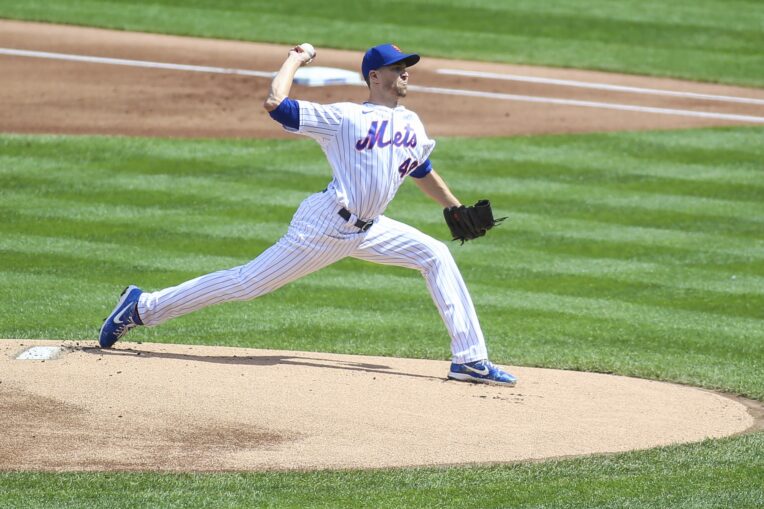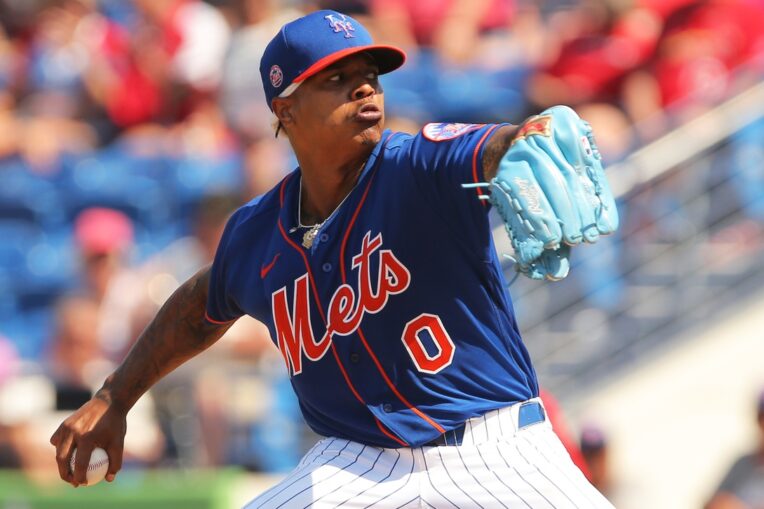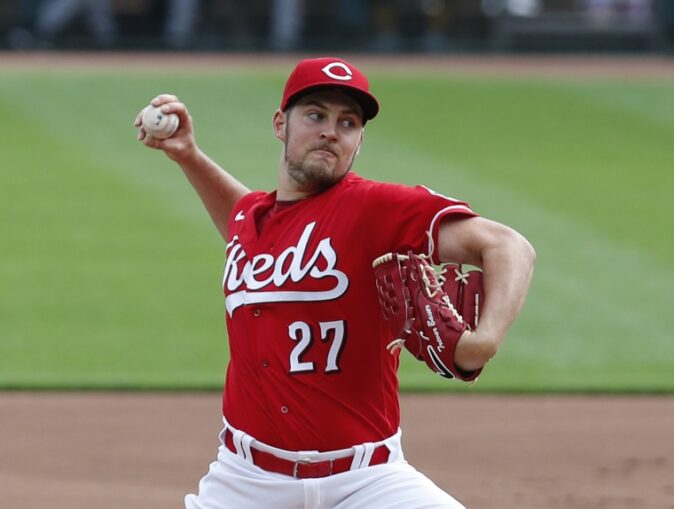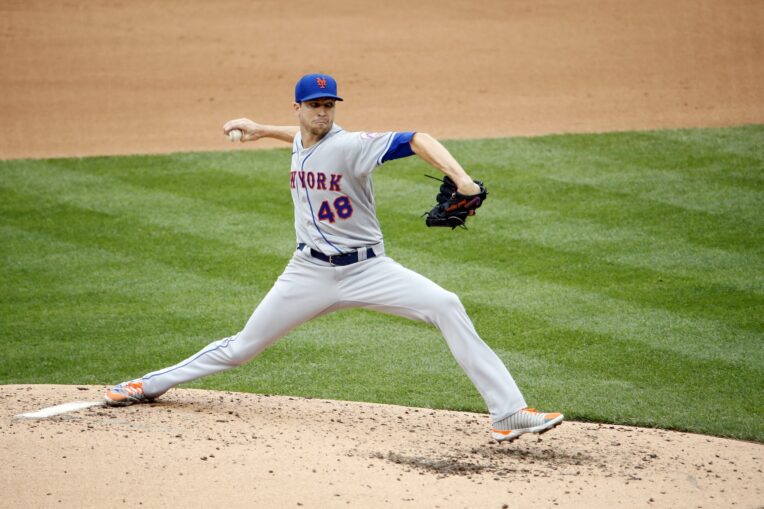
Following the conclusion of a shortened and frustrating 2020 regular season, the New York Mets had a number of holes to fill. One area of the roster that’s gotten some necessary attention is the starting rotation.
After all, Jacob deGrom can’t do everything himself, right?
Bringing Marcus Stroman back on a one-year deal, along with acquiring Carlos Carrasco via trade forms a nice front three when slotted in behind deGrom. If Noah Syndergaard comes back and can pitch every fifth day, that obviously makes the starting staff even deeper. Let’s not forget about David Peterson, who will be in the back of the rotation with hopes of building off a solid rookie campaign, and then there’s Steven Matz and Joey Lucchesi pushing one another for the fifth spot (at the moment).
While it’s very possible we’ll see another arm or two added at some point over the next couple of weeks, I was curious as to how projections viewed the Mets’ rotation heading into 2021.

One of the Best in Baseball
Projections should always be taken with a grain of salt, but it’s a good way to get a glimpse of what we could expect from a player, or a group of players. Upon checking out FanGraphs’ starting rotation projections, the Mets are expected to bounce back from last year’s rotation dumpster fire.
Their 16.5 fWAR is currently baseball’s third-highest projection behind the New York Yankees (18.3) and the San Diego Padres (16.6). When looking at the rest of the league, these three teams are expected to be head and shoulders above the rest, too. The Los Angeles Dodgers are currently a distant fourth with a 14.9 fWAR projection. It drops off even more from there, with the Chicago White Sox coming in fifth with 13.6.
As one can imagine, the majority of the production is coming from deGrom, Carrasco, and Stroman. The projections get more interesting from there. The below table gives a glimpse of the projected workload and fWAR contribution from each listed on New York’s current rotation depth chart.

While the Mets should prepare as though they’re getting nothing from him this year, getting a healthy and productive Syndergaard sometime before the All-Star break would be a tremendous boost. It’d also make Seth Lugo escaping bullpen duties even less likely than they already are.
Similarities and Differences From Recent Years
This type of projection for the Mets’ rotation isn’t anything new. When looking at recent on-field results in 2018 and 2019, they were in this upper echelon of the league.
In 2018, the rotation produced an 18.0 fWAR, ranking third in baseball. The following season, they once again ranked third, but the cumulative fWAR went up to 19.7.
Having deGrom dominate to the tune of consecutive National League Cy Young awards doesn’t hurt in this situation. However, he did have some help. While deGrom posted the majority of the fWAR himself (9.0 in ‘18, 7.0 in ‘19), Syndergaard (4.2 in ‘18, 4.4 in ‘19) and Zack Wheeler (4.2 in ‘18, 4.7 in ‘19) did their fair share of the heavy lifting.
Heading into 2020, New York’s rotation projection was actually on a similar trajectory, as stat models were expecting an 18.1 cumulative fWAR, once again ranking third in baseball over a full season. It’ll always hurt when two of your top three pitchers aren’t active (Syndergaard and Stroman), but nobody else was capable of picking up that kind of slack, exposing New York’s lack of true depth.
Ultimately, the rotation fell well short of preseason expectations, as its 4.7 fWAR ranked 12th in baseball and the cumulative 5.37 ERA ranking fifth-worst in the league.
One of the best qualities Carrasco and Stroman bring back to the front of the rotation is durability. Carrasco threw at least 130 frames each year between 2014 and 2018, while Stroman has thrown more than 180 in three of his last four seasons. This stability will be crucial so the back end of the rotation doesn’t have to step up and be something it’s not throughout the season. And, hopefully, there will be some more moves made over the coming weeks to ensure hurlers won’t need to be pulled from the bullpen to fill holes.

The Work Left To Do
While the most obvious on-field upgrade still available is Trevor Bauer, the Mets have also been actively looking for more traditional pitching depth. They were interested in Corey Kluber before he joined the Yankees and reportedly made a run at Garrett Richards prior to him signing with the Boston Red Sox. And before general manager Jared Porter got fired, New York was having discussions with Trevor Richards.
Although signing Bauer or trading for Sonny Gray would be the home-run type of acquisition when strictly looking at on-field production, there are still plenty of intriguing arms in need of a new home. At first glance of MLB Trade Rumors’ free-agent list, names like Anibal Sanchez, Gio Gonzalez, James Paxton, Felix Hernandez, and Taijuan Walker are just a handful of names that could be had on a cheaper MLB deal or a minor-league deal with an invite to Spring Training.
Regardless of how the next few weeks shake out, we can feel confident that the Mets’ pitching depth will continue increasing and be much improved from last year. Last year’s group had to thread a needle, and that didn’t work so well. New York will inevitably have to deal with pitcher injuries this season because all teams do at some point. What will be key is the depth they have in place to ensure everything doesn’t burn to the ground from a production standpoint as it did a season ago.
Adding Stroman, Carrasco, and Lucchesi will help out tremendously in this regard. Hopefully, this and whatever other additions are left to be made will allow the Mets to reach these preseason projections instead of falling short like we saw in 2020.
















